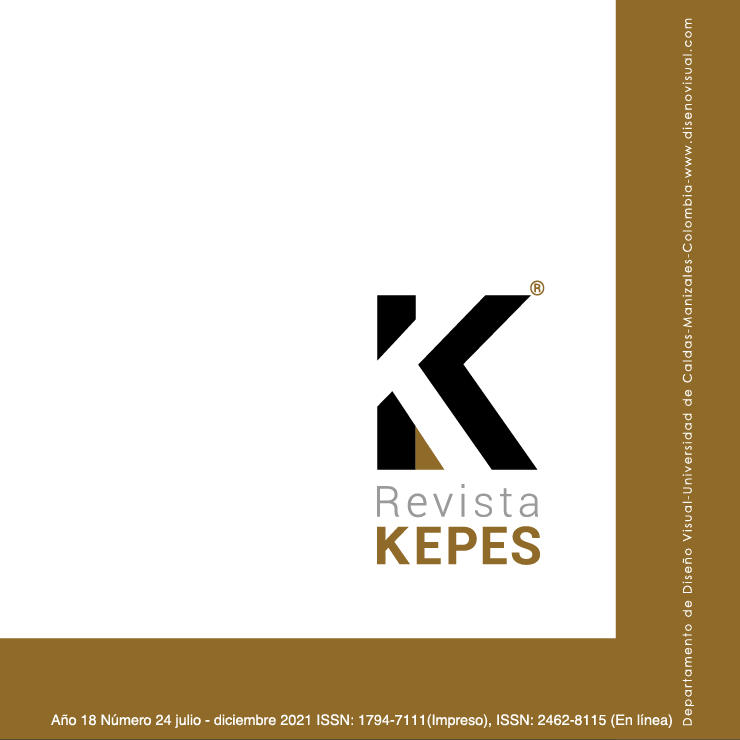Authors
Abstract
The objectives in this article are: firstly, to approach the research of Gregor Schneider’s work as a case study of installation art within the manifestations of contemporary art that use spacetime resources; secondly, Gregor Schneider's work is seen as paradigmatic in this sense, since it enables the transformation of the spatial and architectural structures, in an example of how contemporary artists propose new ways to define the sculptural installation; and, thirdly, Schneider’s work is explored from the point of view of visual studies to try to propose new ways of understanding his work in relation to the art of performative and spatial installation. Methodologically, the research is structured in two parts. In the first part, Freud's concept of the “uncanny” is used to understand the duplication of spaces in the work of Gregor Schneider. An answer to the main question of his work, the reason for the duplication of spaces,I s intended. Understanding this duplication through the Lacanian term “foreclosure”, the focus is mainly on his works Haus u r and Die Familie Schneider. In a second part, the role played by the idea of memory and the idea of trauma in relation to the context in which his work is situated are analyzed and questioned. The concepts of memory, time, trauma and places developed by Dylan Trigg are used as elements that give meaning to his work. Finally, the work is concluded with the reconstruction of memory developed in the works of Gregor Schneider, where the idea of trauma implies a theatricalization and perceptual activation of the viewer.
Keywords
References
Bachelard, G. (2012). La poética del espacio. Fondo de Cultura Económica.
Bal, M. (1999). Quoting Caravaggio: Contemporary Art, Preposterous History. University of Chicago Press.
Bal, M., Crewe, J. V. y Spitzer, L. (Eds.). (1999). Acts of Memory: Cultural Recall in the Present. Dartmouth College.
Boyer, M. C. (1996). The City of Collective Memory: Its Historical Imagery and Architectural Entertainments. MIT Press.
Crinson, M. (Ed.). (2005). Urban memory: History and amnesia in the modern city. Routledge.
Dionne, C. (2003). Gregor Schneider: Des mouvances limitrophes. Revue d’art contemporain ETC, 63, 28-34.
Enwezor, O. (Ed.). (2006). Lo desacogedor: Escenas fantasmas en la sociedad global. BIACS.
Freud, S. (1919). The Uncanny (J. Strachey, Trans.). The standard edition of the complete psychological works of Sigmund Freud (Vol. 17), pp. 217-256.
Halbwachs, M. (2011). La memoria colectiva. Miño y Dávila Editores.
Kobayashi, H. e Inoue, A. (2014). Interview with Gregor Schneider. Magcul. http://magcul.net/ focus/gregor_schneider2sw_page/
Lacan, J. (1988). The seminar of Jacques Lacan. Polity Press.
Loock, U. (2002). Gregor Schneider, The Dead House Ur. Parkett, 63, 138-151.
Moriente, D. (2007). La ficción distópica de Gregor Schneider. Anuario del Departamento de Historia y Teoria del Arte, 19, 189-208.
Nora, P. (1984). Les Lieux de mémoire. Gallimard.
Rossi, A. (1982). The architecture of the city. MIT Press.
Schneider, G., Loers, V. y Loock, U. (2011). Punto muerto: Gregor Schneider. CA2M.
Schneider, G., O’Hagan, A., y Tóibín, C. (2006). Die Familie Schneider. Artangel.
Schneider, G., Siebold, A., Pfeffer, S. y Zyman, D. (2007). Gregor Schneider: 19-20:30 Uhr 31.05.2007 7-8:30 pm 05.31.2007. Verlag der Buchhandlung Walther König.
Trigg, D. (2009). The place of trauma: Memory, hauntings, and the temporality of ruins. Memory Studies, 2(1), 87-101.
Trigg, D. (15 de Enero 2010). Architecture and Nostalgia in the Age of Ruin. University of Bath, Architecture Department.
https://www.academia.edu/208447/Architecture_and_Nostalgia_in_the_Age_of_Ruin
Trigg, D. (2012). The memory of place: A phenomenology of the Uncanny. Ohio University Press.
Williams, G. (2010). Doubling: Gregor Schneider interviewed by Gilda Williams. Art monthly, 340, 1-6.

 pdf (Español (España))
pdf (Español (España))
 FLIP
FLIP






















